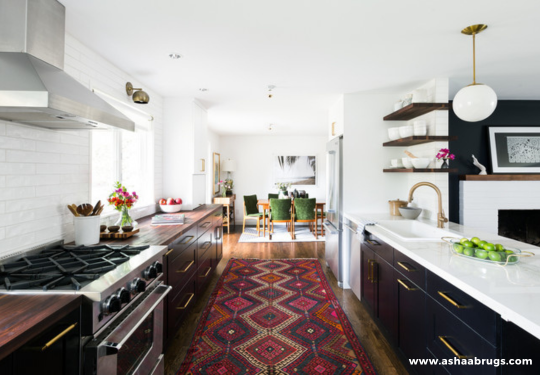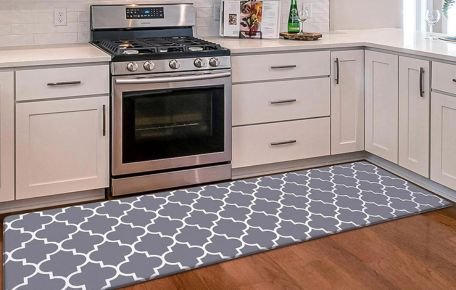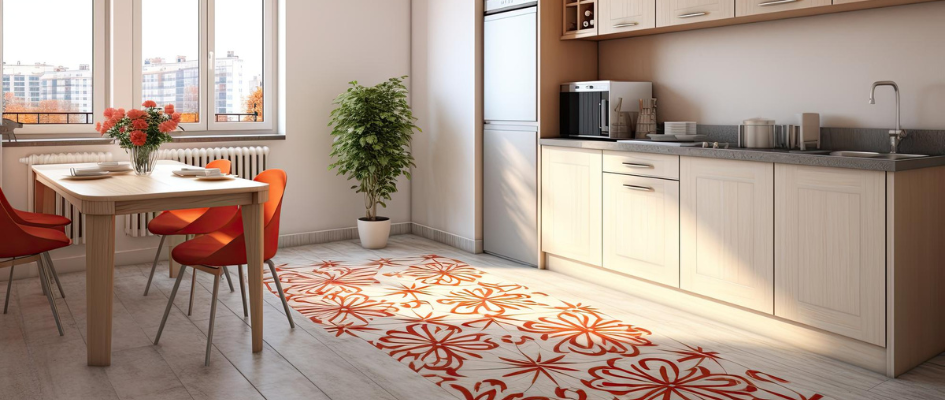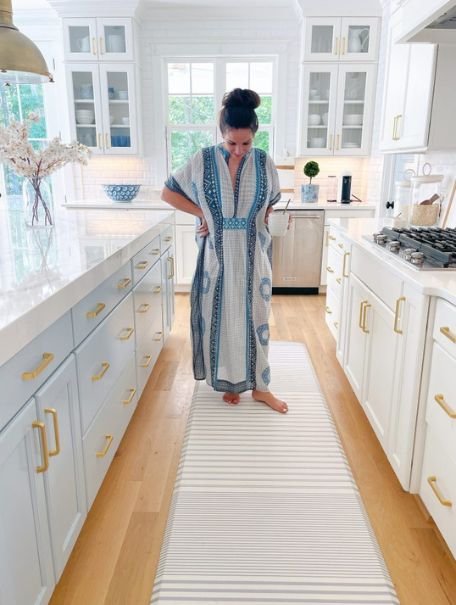
The Benefits of Using Kitchen Rugs and Runners in Your Space
Your kitchen is not just a place for cooking meals; it’s a pin space where family and friends gather, conversations flow, and memories are made. So why not make this essential space not only functional but also visually appealing? One way to achieve this is by incorporating kitchen rugs and runners. However, these seemingly simple additions can make a significant impact on the overall look and feel of your kitchen.
In this blog post, we will explore the various benefits of using kitchen rugs and runners in your space. From enhancing aesthetics to providing comfort, noise reduction, and floor protection, you’ll discover how these versatile pieces can transform your kitchen into a more inviting and functional area.
Benefits of Using Rugs and Runners in the Kitchen
For a warm, inviting, and functional kitchen, consider incorporating kitchen runners or rugs such as Kilims. However, these versatile pieces not only enhance the aesthetics of your kitchen but also provide comfort, cushioning, noise reduction, floor protection, and safety.
In the following sections, we’ll explore each of these benefits in more detail and provide tips on how to choose the right rug or runner for your specific needs. But before, let’s briefly have a look at some pros and cons of rugs or runners in the kitchen.
| Pros | Cons |
| Provide comfort and safety | May show wear and tear more quickly |
| Protects your floor | May not be suitable for all types of flooring |
| Adds interior aesthetics | Can be difficult to clean |
| Increases sound absorption | May harbor bacteria and allergens |
Now, you can go on to explain each benefit in separate paragraphs, providing examples, tips, and insights on how to make the most of kitchen rugs and runners to achieve a more beautiful, comfortable, and safe kitchen.
Interior Aesthetics
Kitchen runner rugs can be a powerful tool in enhancing the overall interior aesthetics of your kitchen. They can instantly add a pop of color, pattern, or texture, creating a focal point or tying together the different elements of your kitchen’s decor. For example, if you have a neutral-toned kitchen, a vibrant rug with bold patterns like a vintage rug can inject some personality and visual interest. On the other hand, if your kitchen already incorporates various colors, a solid-colored rug can provide a visual break and balance the overall look. Additionally, consider the size, shape, and design of your rug to complement your kitchen’s style scheme.

Comfort and Cushioning
Standing for extended periods in the kitchen can take a toll on your feet and legs, leading to discomfort and fatigue. A kitchen carpet runner can provide much-needed cushioning, making your time spent in the kitchen more comfortable. However, look for carpets with thick, supportive padding. Otherwise, consider using gel mats specifically designed for kitchen use. Moreover, placing a rug in front of areas where you frequently stand, such as the sink or stove, will alleviate pressure on your feet and reduce discomfort.
Noise Reduction – Kitchen Rugs and Runners
Additionally, kitchens can be noisy places, especially when appliances are running or dishes are being washed. However, if you find the noise level bothersome, adding rugs in a kitchen can help absorb some of the sounds, creating a quieter and more peaceful environment. Furthermore, opt for rugs with a dense pile or choose materials that have noise-absorbing properties like wool or rubber-backed rugs. By minimizing echoing and sound bouncing off hard surfaces, you’ll make conversations in the kitchen less disruptive.
Floor Protection
Kitchen floors are prone to scratches, dents, and spills due to heavy foot traffic and accidental drops. Carpet kitchen runners act as a protective barrier, helping to preserve your floors from wear and tear. Place rugs or runners in areas where spills are more likely to occur, such as near the sink or stove. Moreover, look for rugs made from durable and stain-resistant materials like nylon or polyester, or consider using indoor/outdoor carpets that can withstand frequent cleaning and are moisture-resistant. Additionally, remember to regularly clean and maintain your rugs to prevent any dirt from causing damage to your floors.
Preventing Slips and Falls
Lastly, the kitchen can be a hazardous area, especially when it comes to slips and falls. Spilled water or oil on a hard surface can quickly become a slippery hazard. However, kitchen carpets with non-slip backing can significantly reduce the risk of accidents by providing traction and stability. Ensure that the rugs you choose have a non-slip backing or use rug grippers or double-sided tape to secure. Additionally, avoid using rugs with excessive fringes or loose edges that could cause tripping.

By considering these benefits and incorporating the best kitchen runners strategically, you can transform your kitchen into a more beautiful, comfortable, and safe space.
Maintenance Tips for Kitchen Rugs and Runners
Here are some tips on maintenance and cleaning of kitchen rugs:
- Regular Vacuuming: Use a vacuum cleaner with a brush attachment to remove dust, dirt, and food particles from your kitchen rugs and runners. Vacuum at least once a week, or more frequently if needed.
- Spot Cleaning: Quickly attend to spills and stains on your kitchen rugs and runners to prevent them from setting. Blot the area with a clean cloth or paper towel to absorb as much of the liquid as possible, then use a mild detergent or carpet cleaner specifically designed for the type of rug you have.
- Deep Cleaning: Depending on the material, you may need to deep clean your kitchen rugs and runners periodically. However, this can be done using a carpet cleaner or by hiring professional cleaning services.
- Rotation and Flipping: To ensure even wear and tear, rotate your kitchen rugs and runners periodically. This is especially important for rugs placed in high-traffic areas such as near the sink or stove. Moreover, flip your rugs occasionally to prevent one side from fading or becoming more worn than the other.
- Sunlight Exposure: Furthermore, be mindful of direct sunlight exposure, as it can cause fading or discoloration of certain rug materials. If your rug receives direct sunlight, consider using curtains to minimize exposure, or rotate the rug periodically.

- Regular Maintenance: In addition to cleaning, regular maintenance can prolong the lifespan of your kitchen rugs and runners. However, if there are any loose edges or corners, secure them to prevent tripping hazards. Moreover, smartwatches also can be a helpful tool in reminding you to perform regular maintenance tasks for your kitchen rugs and runners. You can set up reminders on your smartwatch to vacuum, spot clean, or rotate your rugs periodically.
Conclusion
In conclusion, integrating kitchen rugs and runners into your culinary space offers a plethora of benefits that extend far beyond mere aesthetics. However, beyond just enhancing the visual appeal, washable kitchen runner rugs with rubber backing elevate the overall experience of cooking and congregating in this central hub of your home. Furthermore, from providing a cozy cushion for tired feet to mitigating the risk of slips, the advantages are manifold.
Moreover, with proper maintenance and cleaning, you can ensure that your kitchen rugs and runners remain in pristine condition, prolonging their lifespan and maximizing their utility. Lastly, whether you choose a vibrant rug or a sturdy runner, the transformative power of these accents cannot be overstated.
Embrace the opportunity to enrich your space with the warmth, comfort, and safety that only well-chosen rugs from As-haab Rugs can provide.
FAQs
Which rug material is most suitable for kitchens?
Choosing materials that are waterproof or easy to clean is crucial. Jute, sisal, or flatweave cotton are perfect choices for kitchen rugs!
Can rugs enhance the aesthetic appeal of kitchens?
Given that many kitchens are characterized by stainless steel and other neutral tones that complement cabinets, a rug in the kitchen can introduce a refreshing pop of color.
What are the benefits of using kitchen rugs and runners?
Kitchen runners or rugs are versatile pieces that not only enhance the aesthetics of your kitchen but also provide comfort, cushioning, noise reduction, floor protection, and safety.
What are some disadvantages of using rugs in a kitchen?
Some disadvantages of using rugs in a kitchen include increased wear and tear, cleaning challenges, potential for harboring bacteria and allergens, compatibility issues with flooring, and tripping hazards.
Can i use handmade rugs in the kitchen?
Using handmade rugs in the kitchen is possible, but consider the increased cleaning effort and potential for damage. However, opt for stain-resistant materials and prioritize regular cleaning for a successful outcome.
